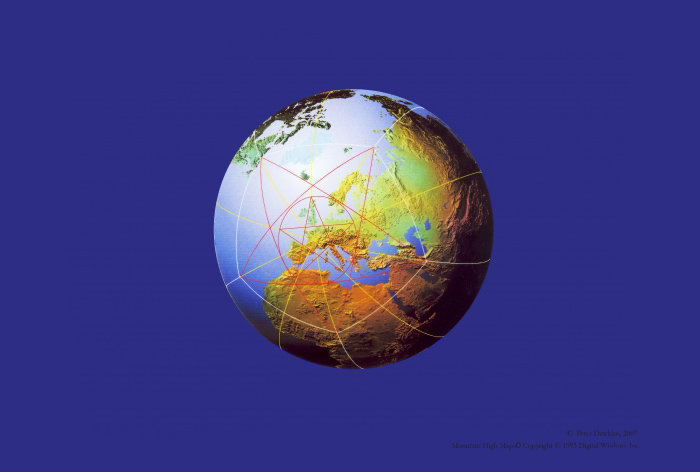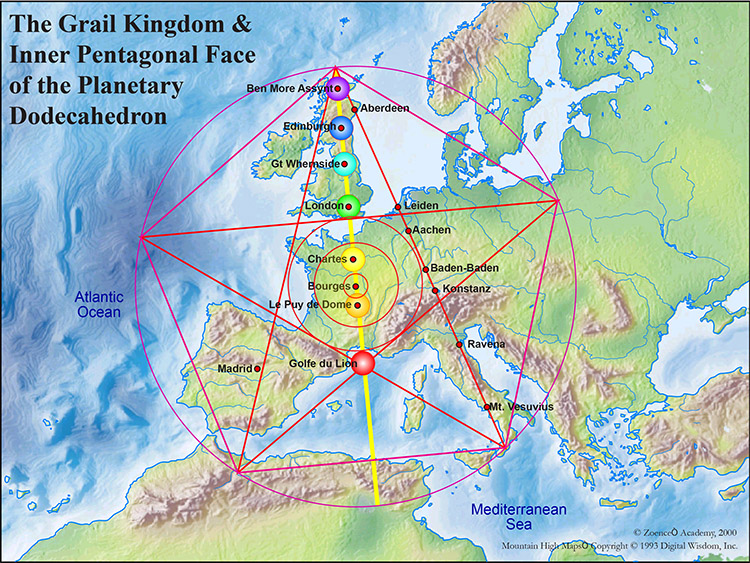The Planetary Light Body
The work of building the planetary light body or temple of light was begun many millennia ago, and has been continued by many cultures and initiatic societies the world over. Its science, though, has often been kept a secret or deliberately shrouded in mystery, or simply overlooked. In geomantic terms, it means assisting the etheric body of the planet to find its natural expression of harmony, order and beauty, in which the dark ether (its subtle substance) becomes a form of light.
Because of the special time we live in now, at the beginning of a new Great Age, there are extraordinary opportunities for transmuting the old thought forms and energies into a shining new consciousness and state of being. It involves not only right emotion, thought and living by human beings, but also a true companionship with the earth itself—a friendship with each other and the landscape. A key to this is the creation of joy and the sharing of joy: but this has to be worked at, and is an art in which pilgrimage and the landscape play an important part.
A key to the world's etheric body of light is the geometric structure of energy referred to as the Planetary Dodecahedron. By this is meant a spherical dodecahedron (one of the Platonic Solids) which is associated with the underlying archetypal and etheric structure of the planet. Each of the twelve faces of a dodecahedron is associated with a sign of the zodiac.
The Planetary Dodecahedron was first hinted at and cryptically described by Plato. He described it as the geometric basis of the world's body of light or paradise on earth. Such a body is a real thing, for dark ether (the basis of all matter) can be turned into light (the quintessence) when it is enabled to express harmony and love as fully as possible. Our human body has an etheric counterpart which can be transformed into a body of light by right effort. So also has the planet.
Research has discovered that this Planetary Dodecahedron does indeed exist and that the centre of one of its twelve faces has its anchorage in the landscape at Bourges, the 'heart' of France and 'hara' of the Grail Land of Western Europe. The axis of the Grail Land forms the main axis of this dodecahedral face, the geometry of which covers all of Europe, the Near East and North Africa, whilst its inner geometry covers the Grail Land (Western Europe).
Since the twelve faces of a dodecahedron relate to the twelve signs of the zodiac, and Europe is named after the myth of Europa and the Bull, this particular face of the Planetary Dodecahedron is almost certainly the Taurean face.
Further Information: www.zoence.co.uk/info-landscape-temples/

